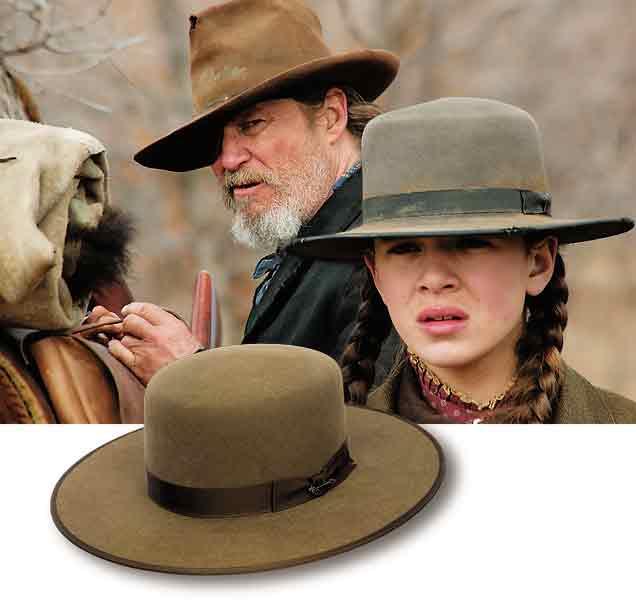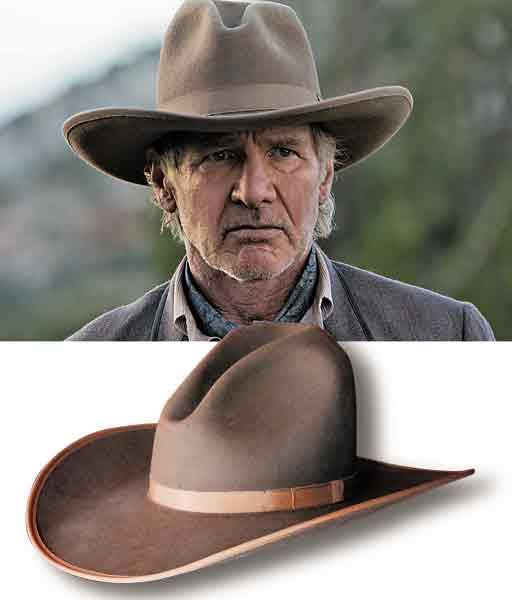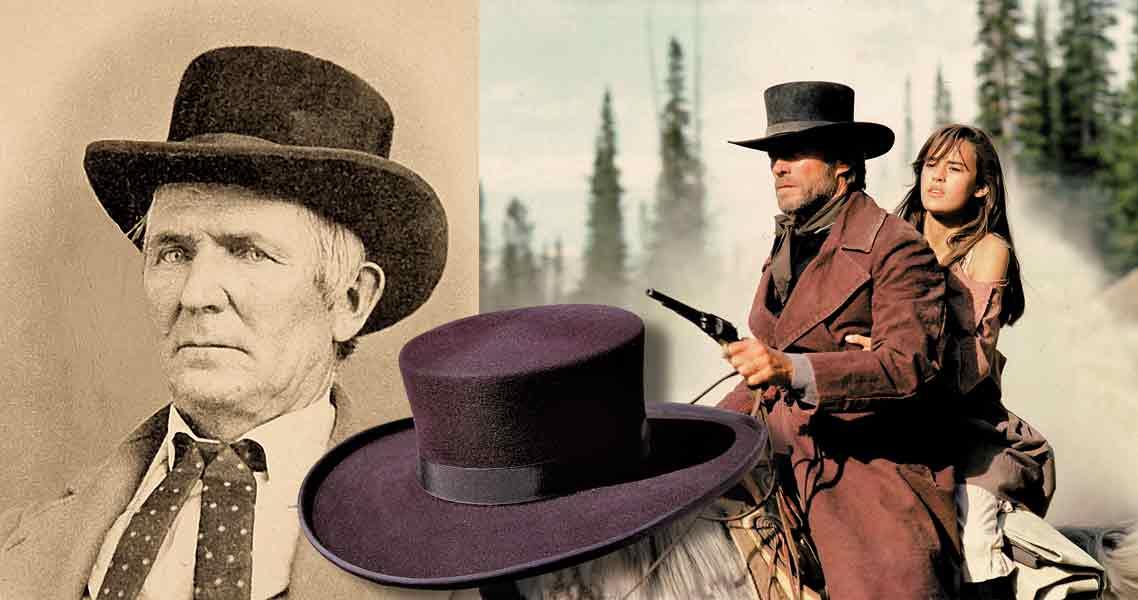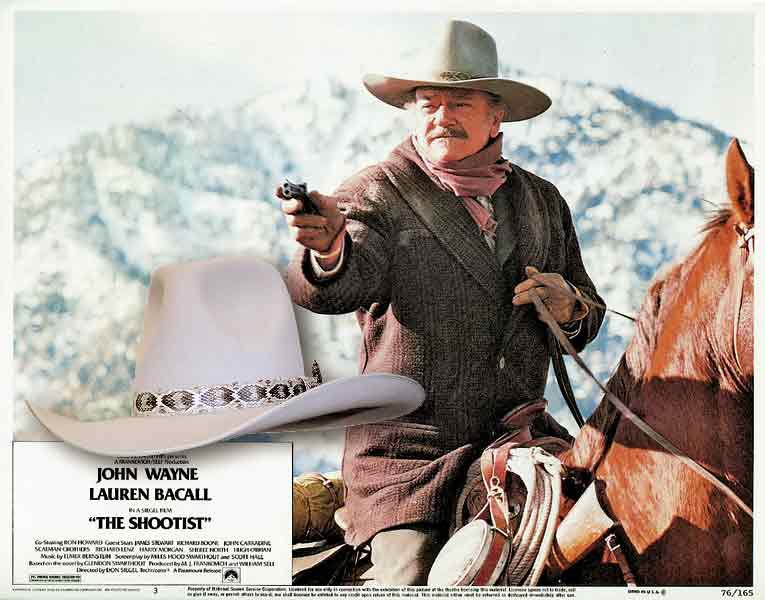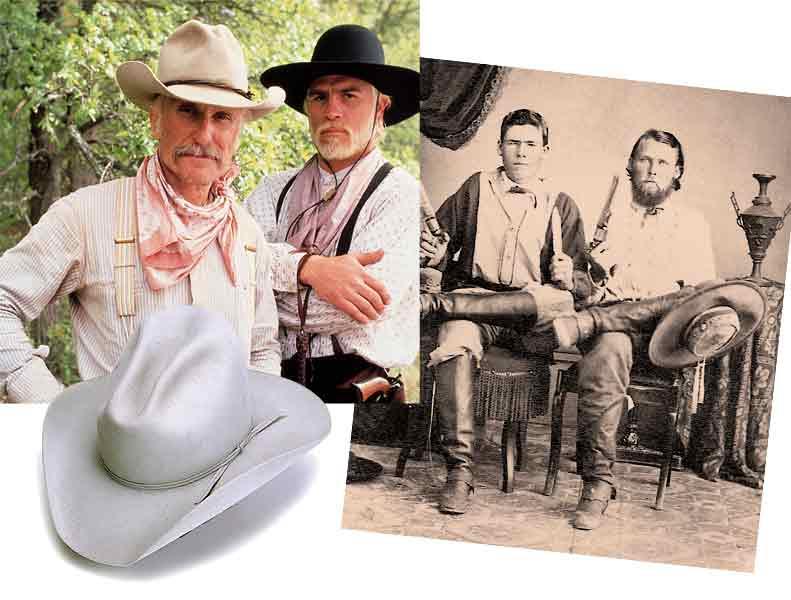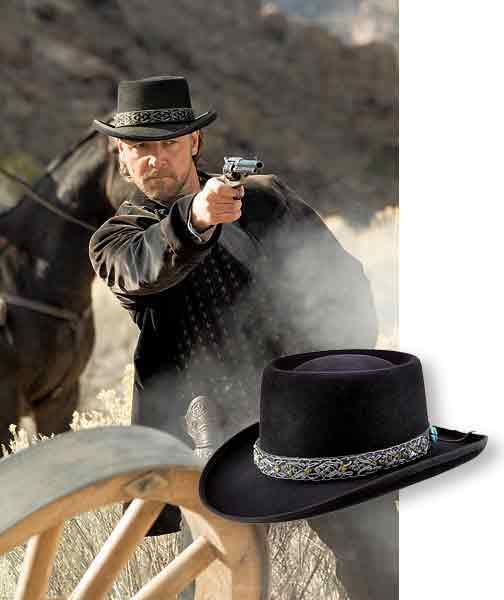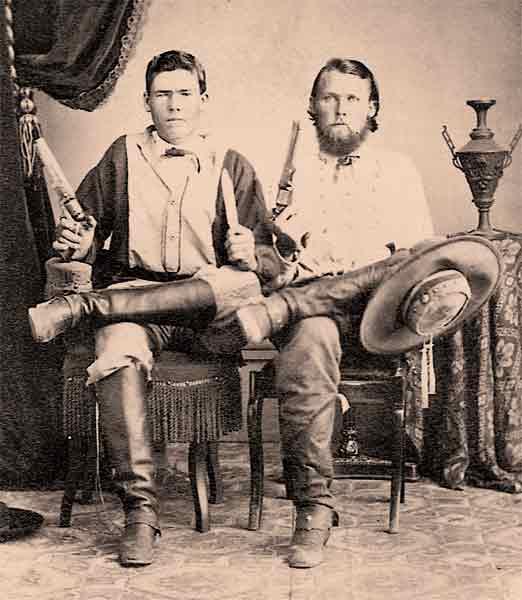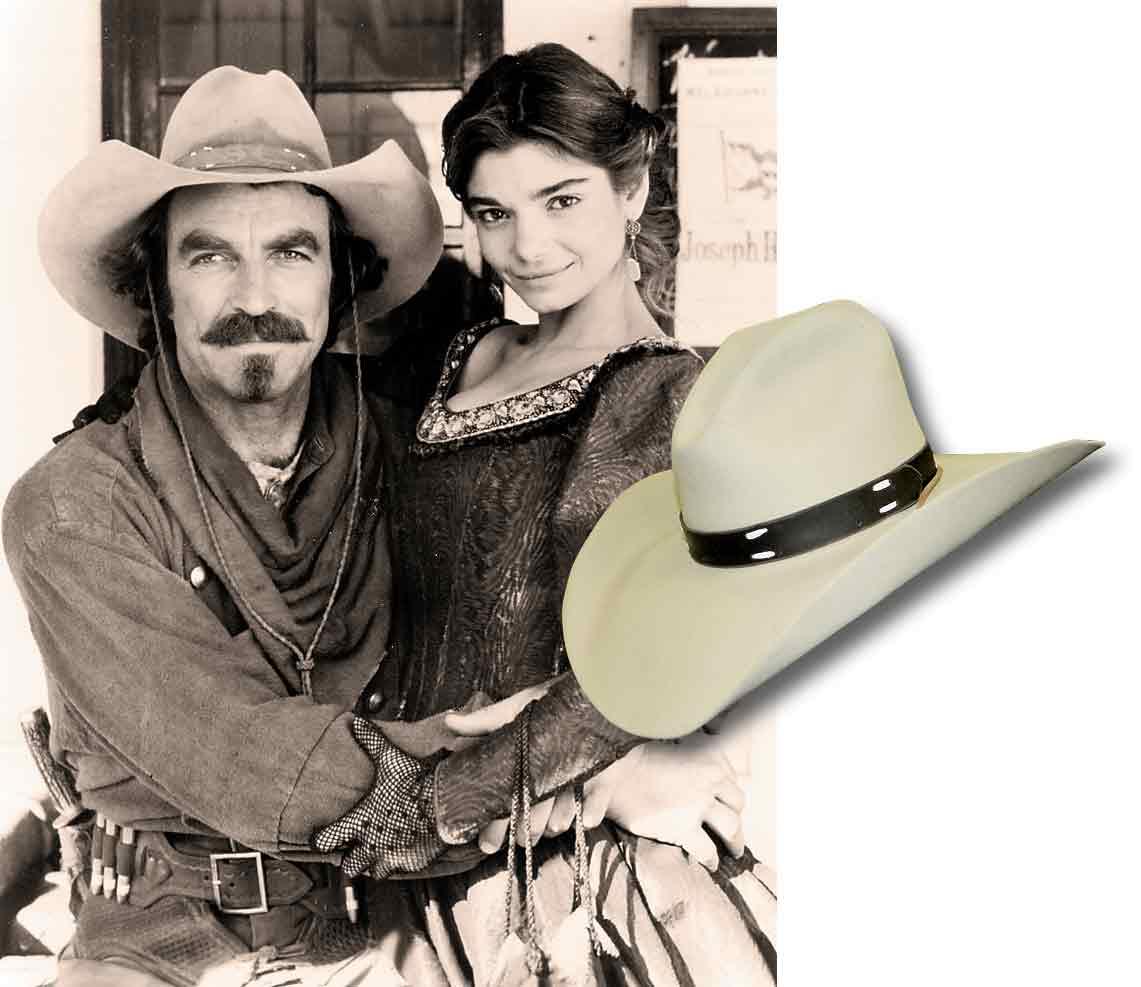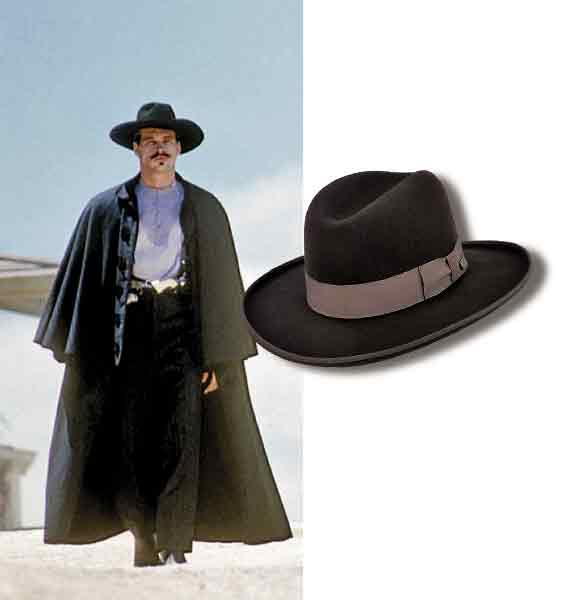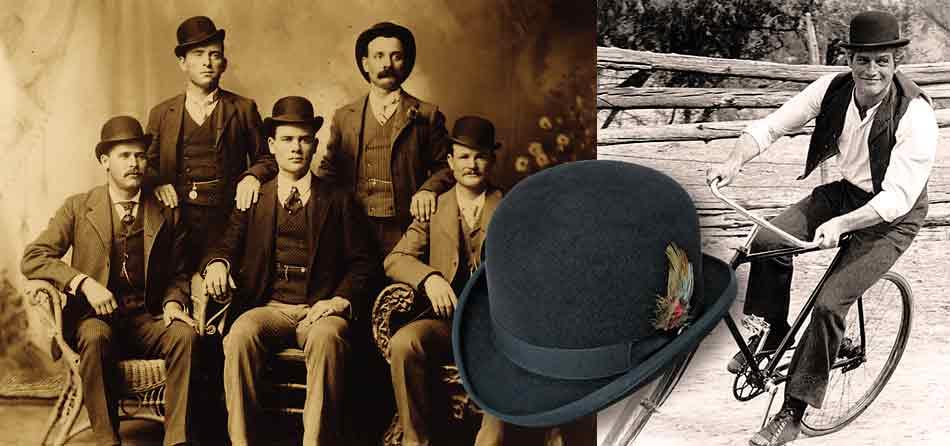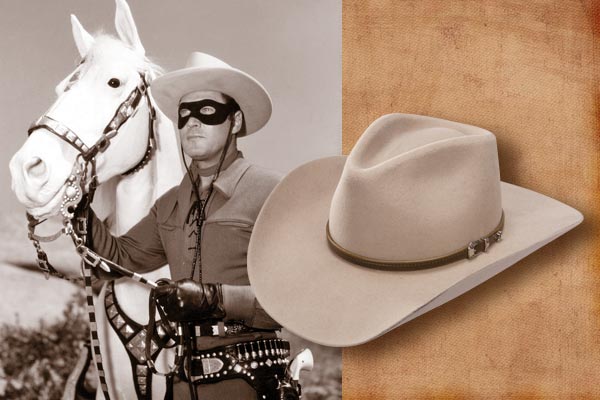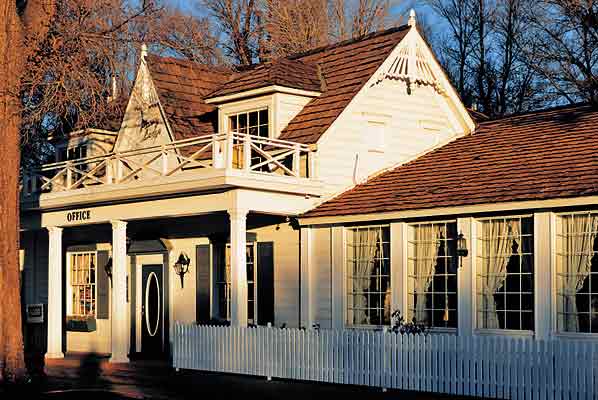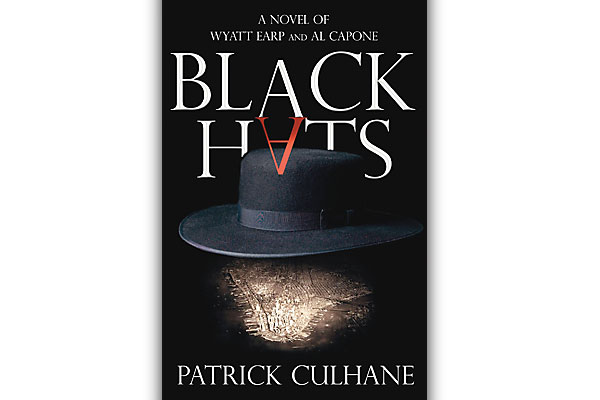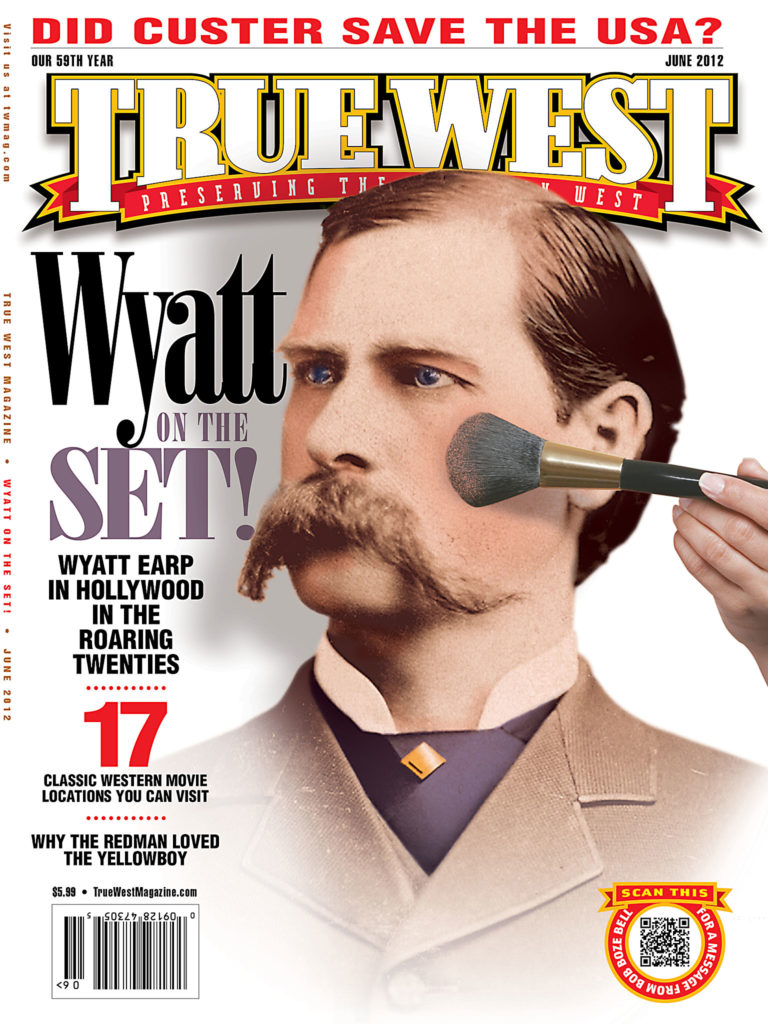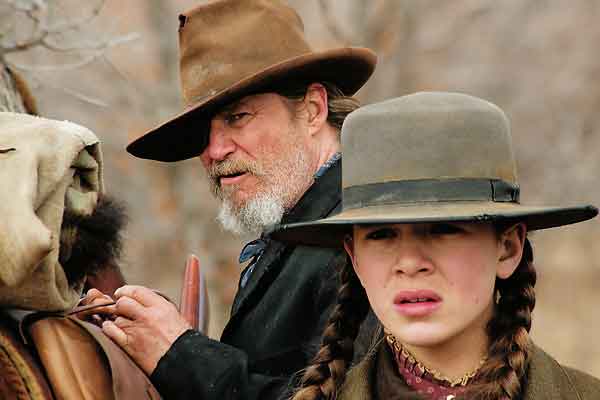 Movies both reflect cultural trends and influence them. The hats worn by cowboys in countless Western movies and television shows were and are often symbolic of the characters wearing them.
Movies both reflect cultural trends and influence them. The hats worn by cowboys in countless Western movies and television shows were and are often symbolic of the characters wearing them.
Tom Mix in his signature high-domed white hat helped institute the notion that good guys wear white hats. If the movie hero’s hat wasn’t white, it was usually distinguished by its size or crease or some combination of color, size and shape.
The arrival of Technicolor and more complex characters made the color less important, but the hat continues to play a significant supporting role in establishing a character’s personality and making him—or her—stand out from the rest of the cast. Sometimes the hat makes the cowboy; other times the cowboy makes the hat. Either way, a movie hat can influence styles and trends for years, if not decades.
Many early movie cowboys were actually rodeo or even working cowboys who arrived with their own personal style, including the hats they wore. As movies became bigger business, costume designers began dictating what the characters wore on screen. Whether a given hat style was historically accurate depended on the designer’s fealty to realism or subservience to fashion. The pristine, meticulously blocked and creased hats worn by matinee idols like Roy Rogers and Gene Autry stand in stark contrast to the sweat-stained, beat-up versions worn by Kevin Costner in Open Range or Jim Beaver in HBO’s Deadwood miniseries.
Leading actors can override the notions of studio wardrobe departments. In many of his movies, John Wayne wore a grey or silverbelly hat with a front-pinched, diamond-creased crown—said to be his personal favorite style.
For the most part, the hats worn by actors are simply part of the costumes donned for a production. “They just wore whatever they were given to wear,” says Randy King, whose family founded and operated King’s Western Wear in Van Nuys, and then Studio City, California.
He should know; he and his parents sold and even styled a lot of the hats seen in Westerns after the store opened in 1946 until it closed in 2007.
“Some actors, though, are real hands-on about their hats,” he adds. “Tom Selleck wanted 100-percent control of the hats we made for him. He’d wear a hat seven or eight months before shooting began to get into character.”
One of those hats was the big, forward-sloping center crease hat he wore in Quigley Down Under.
Uber realistic Old West hat styles have become more prominent in Westerns since the 1980s. Robert Duvall overrode the period-authentic, flat-topped, Spanish-flavored hat originally sketched for the character Augustus “Gus” McCrae in the CBS miniseries Lonesome Dove. Instead, he opted for a tan center-gully style that was based on the hat worn by an unidentified Texas Ranger in a circa-1890s photo.
Likewise, the derby worn by Paul Newman in Butch Cassidy and the Sundance Kid was based on the derby worn by the real Butch Cassidy in a photo of him and his cronies.
Clint Eastwood’s flared top short stovepipe in Pale Rider was said to be inspired by a hat style worn by at least some of the Mormon “Avenging Angels,” also known as Danites. In an old photo, Danite leader John D. Lee scowls at the camera from under a version of that hat—not unlike Eastwood’s menacing squint as a mysterious avenging angel.
G. Daniel DeWeese coauthored the book Western Shirts: A Classic American Fashion. Ranch-raised near the Black Hills in South Dakota, Dan has written about Western apparel and riding equipment for more than 25 years.
</p>”</p>”</p>”</p>”
Photo Gallery
Hailee Steinfeld, as the determined Mattie Ross, wore the classic unshaped Boss of the Plains hat style in the 2010 version of True Grit. Stetson offers this hat, the Austral, made out of American buffalo fur blend; $140.
Harrison Ford dons a center crease, side-dented hat as cattle baron Col. Woodrow Dolarhyde in the quirky Sci-Fi Oater Cowboys & Aliens. To get Ford’s look, check out this pecan-colored, beaver blend hat from Limpia Creek Hats; $375.
In his final film role, as gunfighter J.B. Books for The Shootist, John Wayne wore a cowboy hat with a six-inch crown in his favored pinch-front, triangle crease style. Golden Gate Western Wear offers the Duke’s Shootist hat in 10X beaver. The hat is shown here in silverbelly ($529.98) with the optional snakeskin hat band and its attached diamondback rattler ($95).
In the shown 1868 portrait of Texas Rangers James Thomas Bird and John J. Haynes, Haynes holds his dark Spanish-flavored hat with its low, flat crown and wide brim. Costume designer Broughton Ramsey suggested this style for the Lonesome Dove character Augustus McCrae.
Actor Robert Duvall rejected Ramsey’s period-authentic design in favor of a bone-colored, high-crowned hat with a forward-sloping center crease and side pinches. The owner of Texas Hatters in Lockhart, Texas, and a friend of the film’s director Bill Wittliff, Manny Gammage made that hat style based on one worn in a circa 1890s Texas Ranger photo. Duvall later sent a studio photo of himself in character, with his scrawled inscription, “Manny, Many thanks for the hat. Best wishes, Robert Duvall.” The miniseries and Duvall’s hat became Western sensations. Nearly every Western hatmaker, including Texas Hatters, does a version of Duvall’s hat, complete with the twisted leather hatband; offered in varying beaver qualities, starting at $385.
The telescope-creased, narrow-brimmed hat worn by Russell Crowe, as outlaw Ben Wade in 3:10 to Yuma, is replicated here by Baldwin Custom Hats. Baldwin’s 100-percent black beaver hat has an embroidered ribbon hatband accented with turquoise stones on either side of the leather closure in back; $980.
Sharpshooter Matt Quigley’s massive hat in Quigley Down Under has the tall center crease block and high rolled side brim dipped front and back that is associated with hats worn by cowboys frequently exposed to rain. The sloping crease and dipped brim sheds water more readily than the horizontal blocks and flat brims associated with the Southwest. It’s a big personality hat that only someone like Tom Selleck could pull off convincingly. Last Best West offers this big hat in varying beaver qualities, starting at $310.
Val Kilmer as Doc Holliday sports a slightly exaggerated Homburg-looking hat with a pinched-front center crease and a flared front pencil-curled brim. Milano Hats’ version sports a center crease and a pencil-curled bound brim; $210.
Actor Paul Newman donned a derby for a memorable scene as outlaw Butch Cassidy. Derbies were a Victorian mainstay, and the real-life Cassidy, Sundance Kid and some of their Wild Bunch cronies all look dapper wearing their derbies in the famous “Fort Worth Five” photo. Beaver Brands offers this contemporary take on the classic derby in 100-percent beaver fur with a bound edge and pencil curl; $650.


